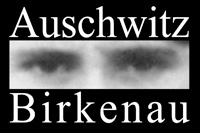




BIIf
(German: Bauabschnitt IIf – construction segment 2, sector f)
A hospital camp, one of the nine camps in Birkenau, opened in July 1943. It was made up of 17 wooden barracks and a washroom‑latrine. Barracks housed sick prisoners in surgical, internal medicine, dermatological, and contagious diseases departments (typhus).
The most notorious block was number 12, used for patients unlikely to recover, who were subject to systematic selection for the gas chambers. SS physicians exercised formal supervision over the camp, with Josef Mengele among them. They devoted most of their time to keeping records and writing reports, as well as carrying out selection in the blocks. In practice, a prisoner physician was responsible for organizational matters and the standard of treatment. Doctors, nurses, and auxiliary personnel in the various blocks reported to him. Despite their efforts, they were unable to help many prisoners because of the inadequate supply of medicine.
The peak population of the hospital camp was 2,700 in December 1943. Many of them were still in Birkenau when the evacuation (Death Marches) began in January 1945.
